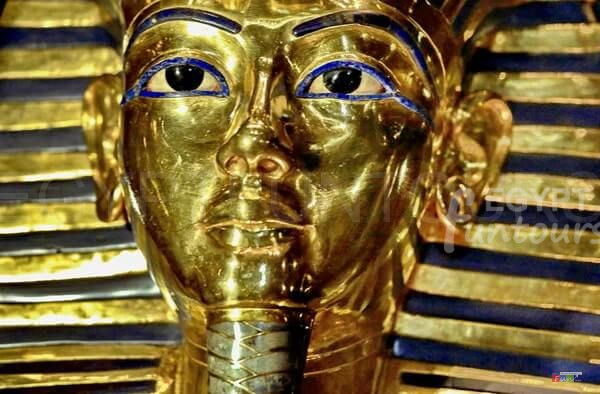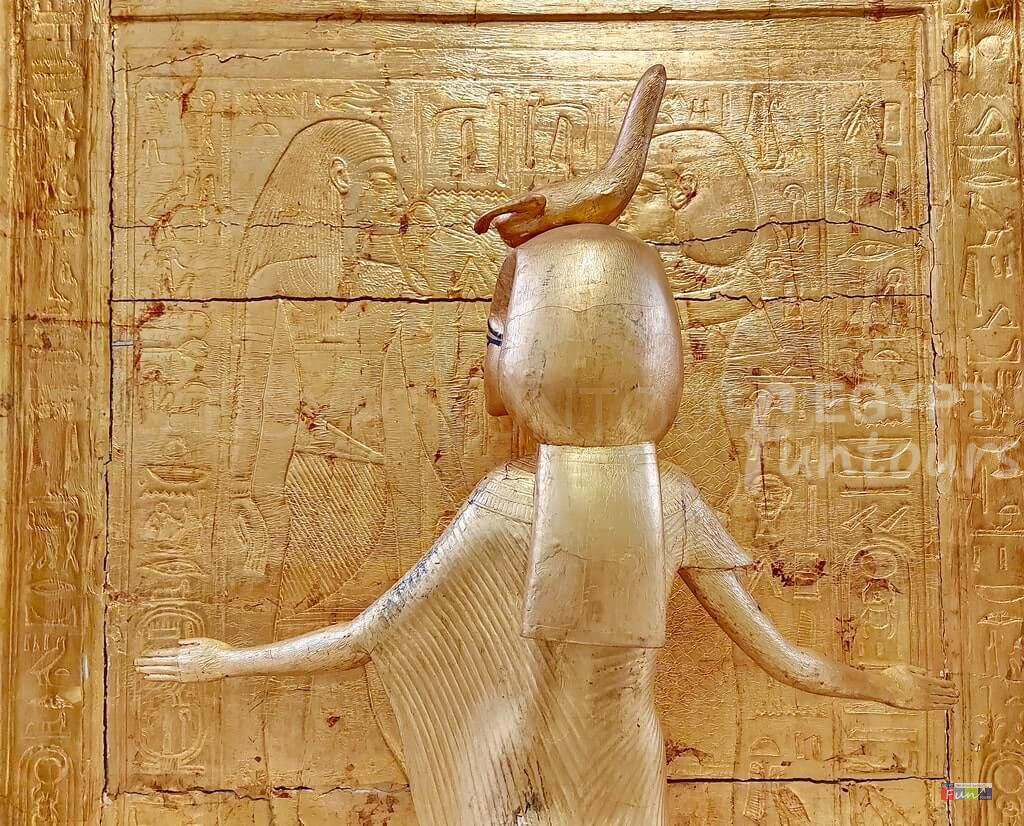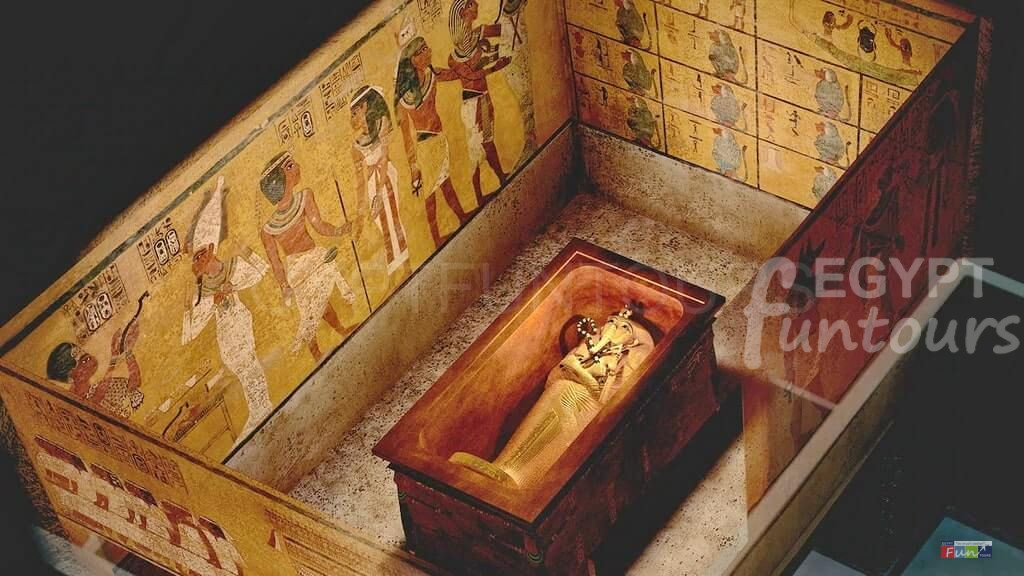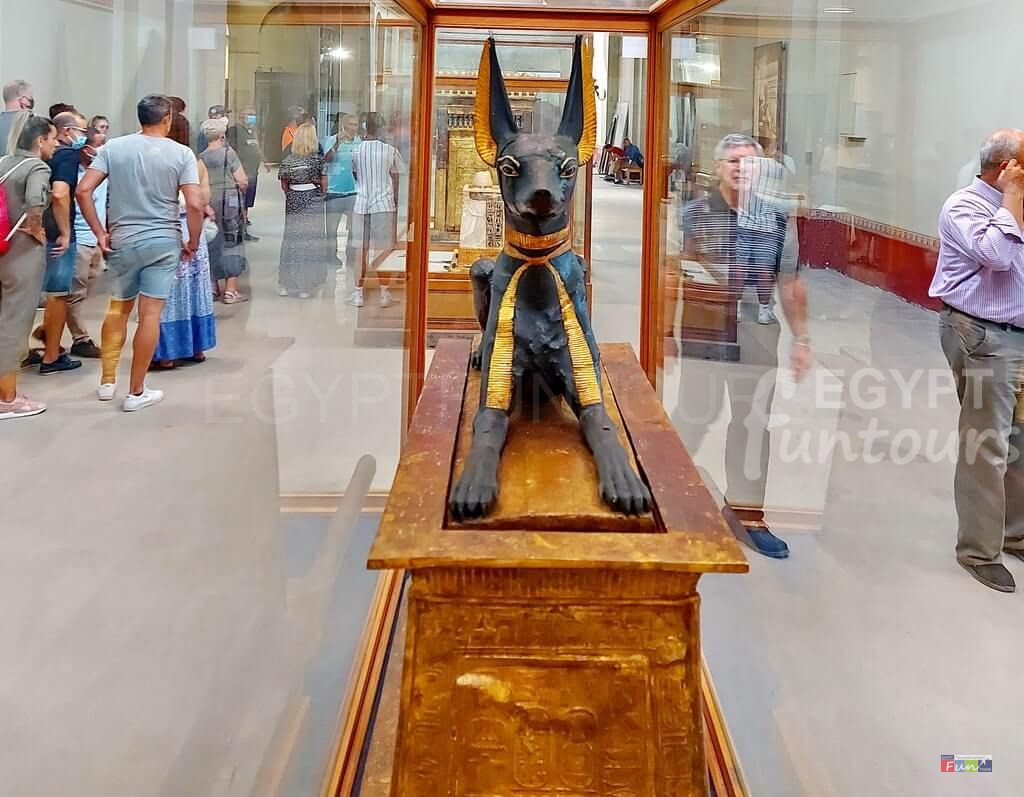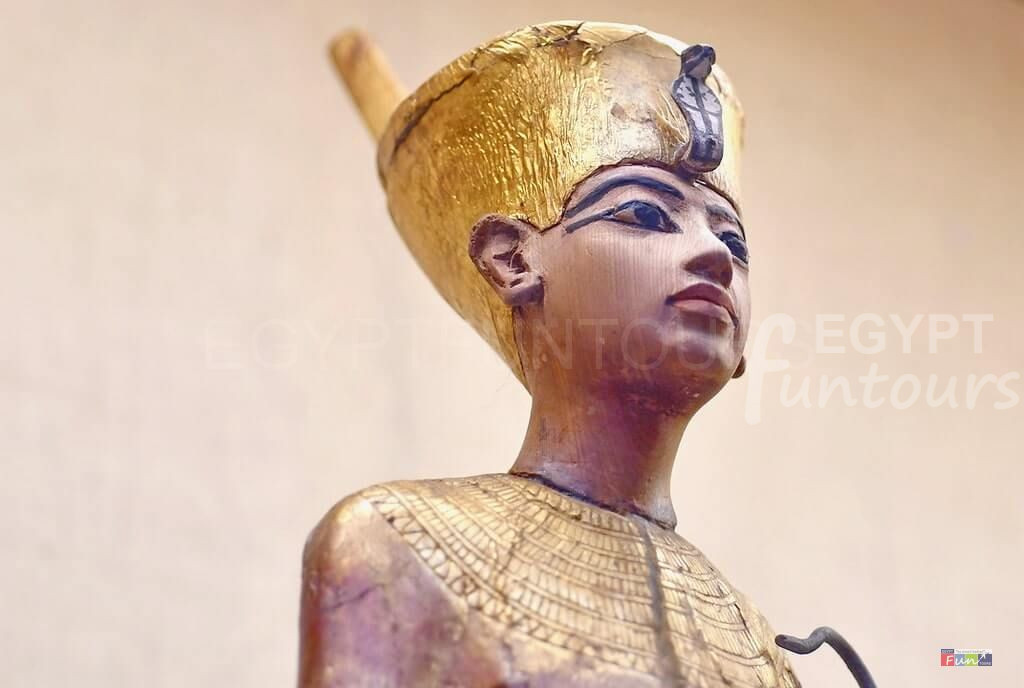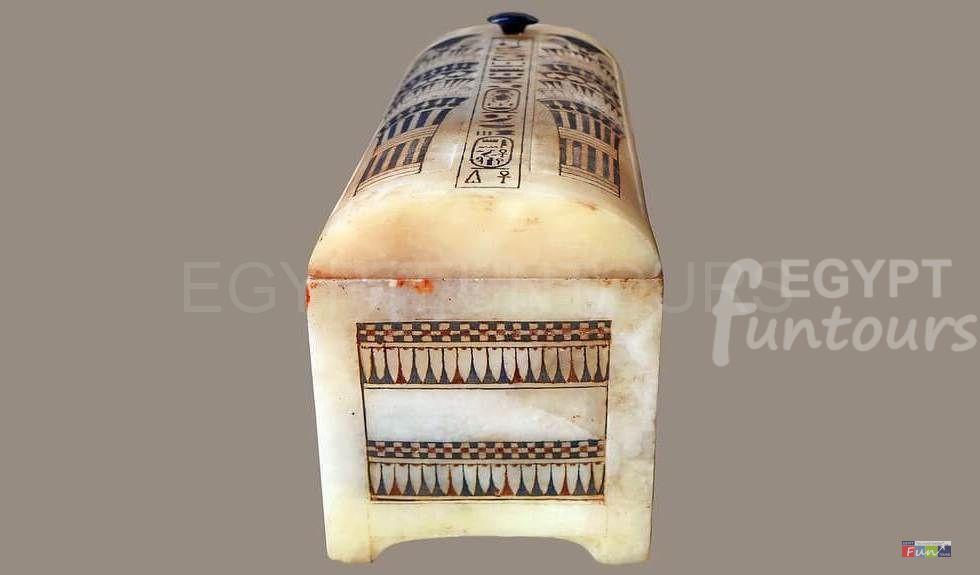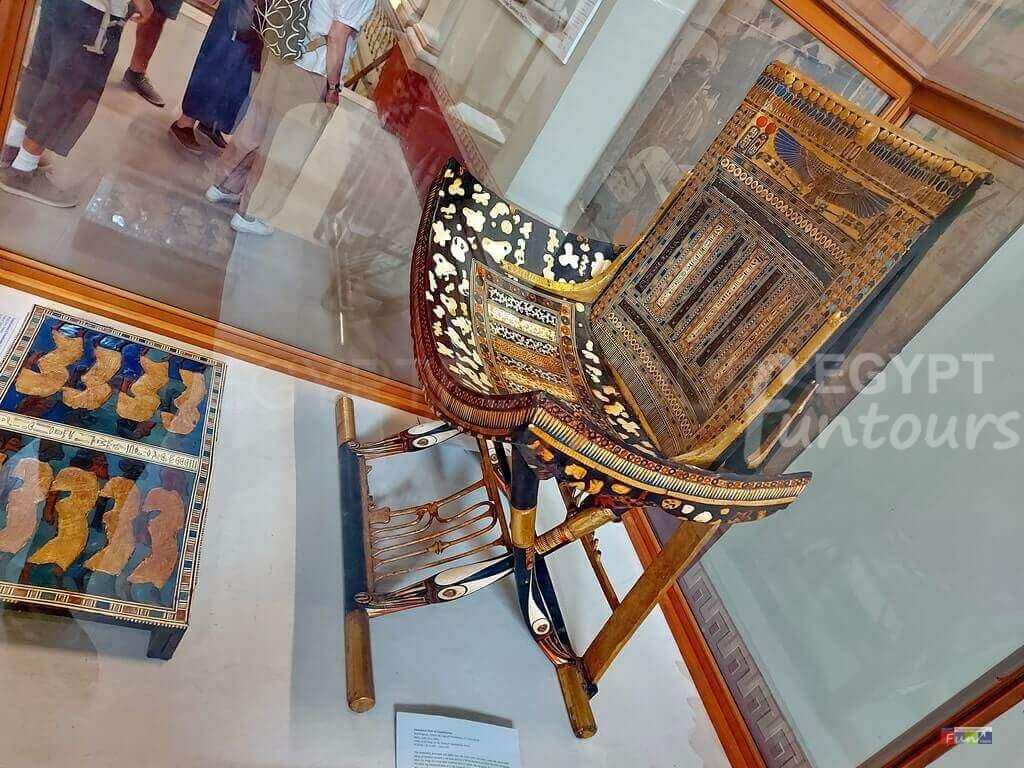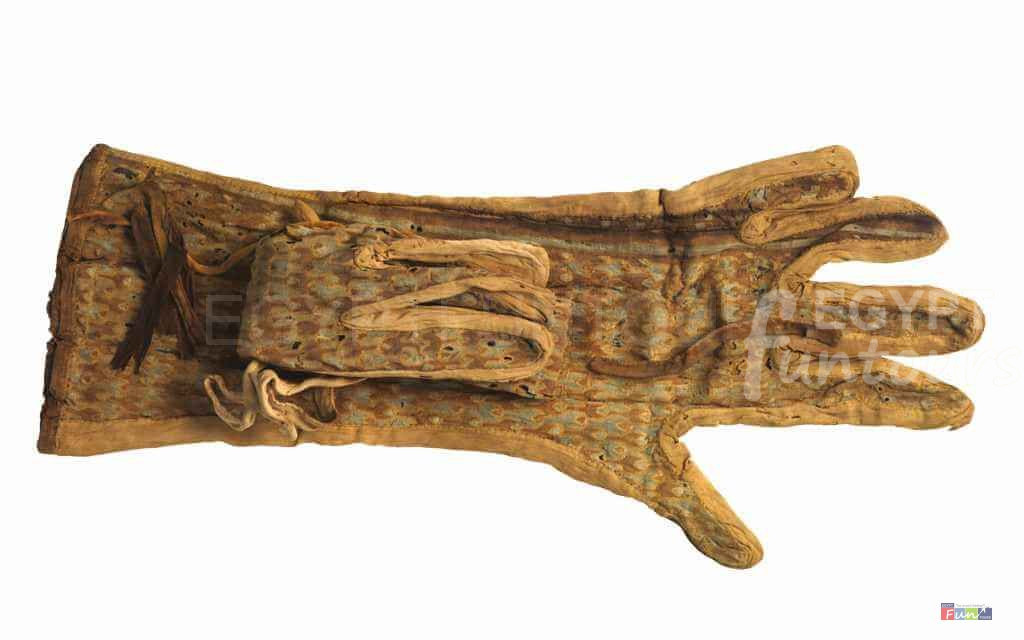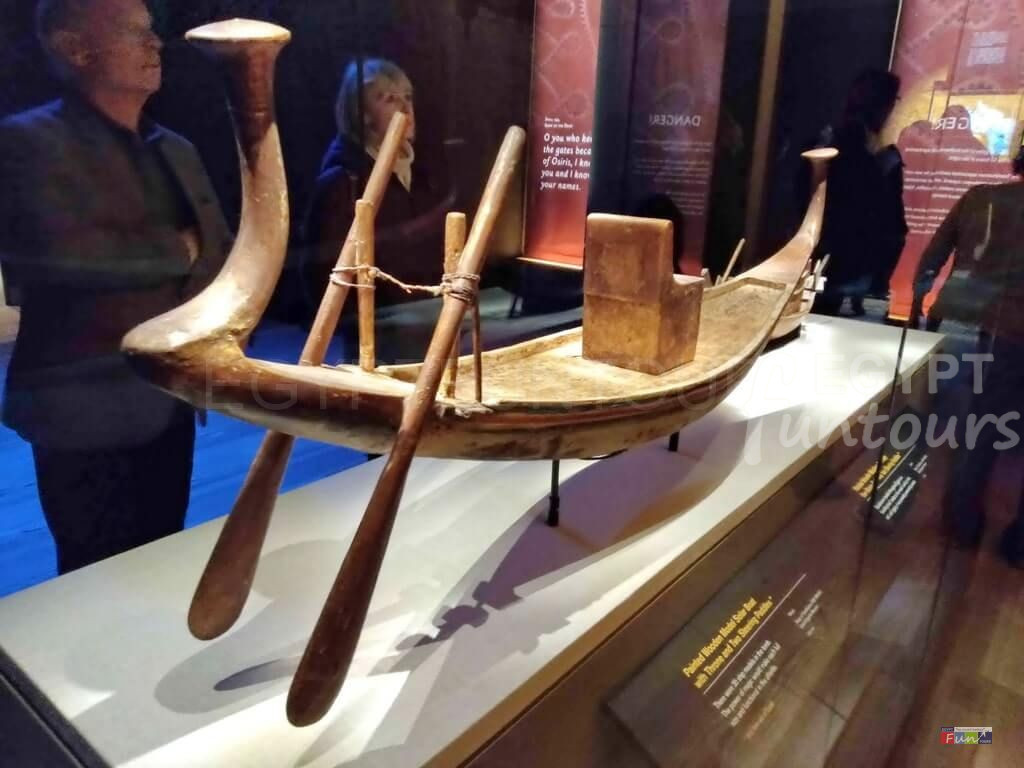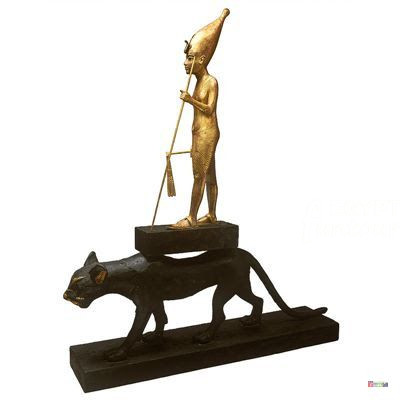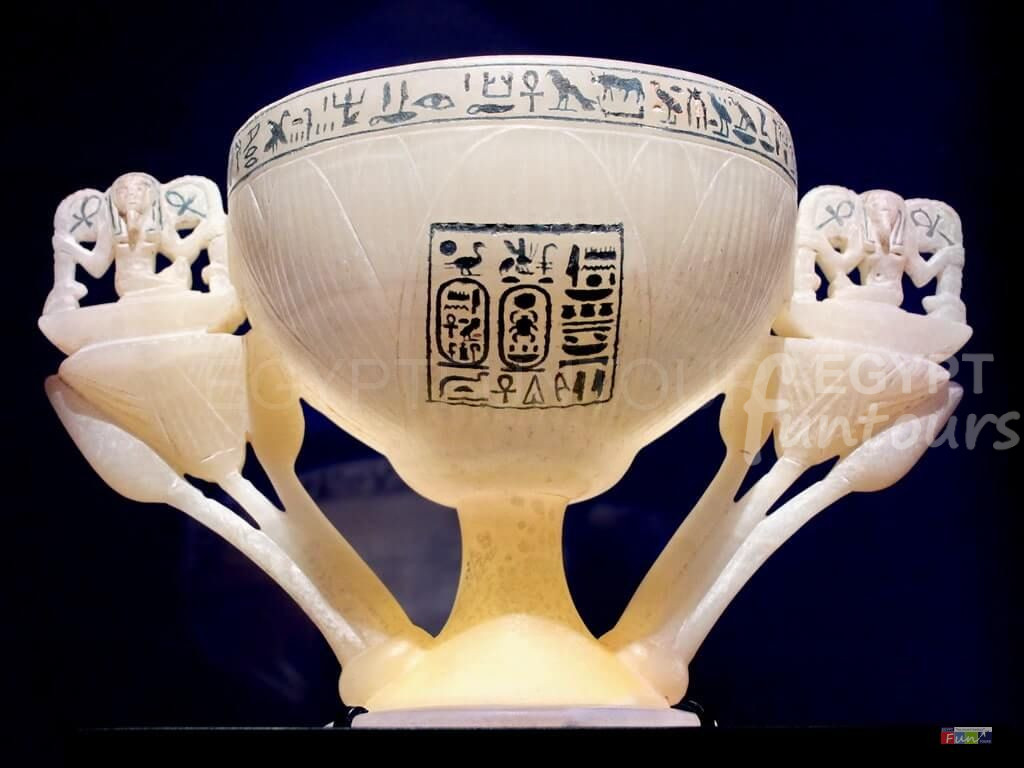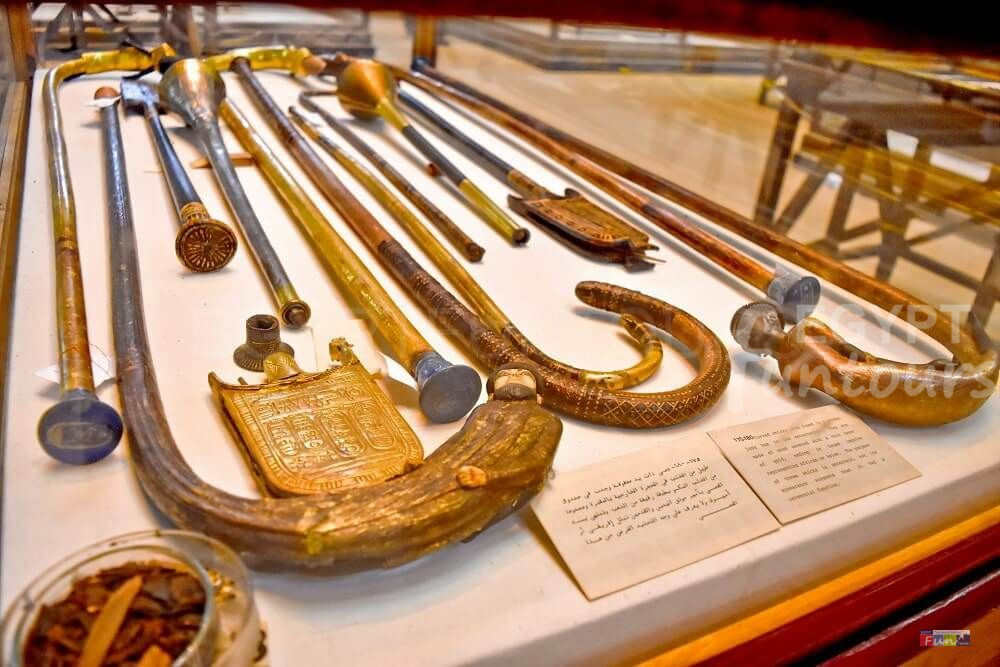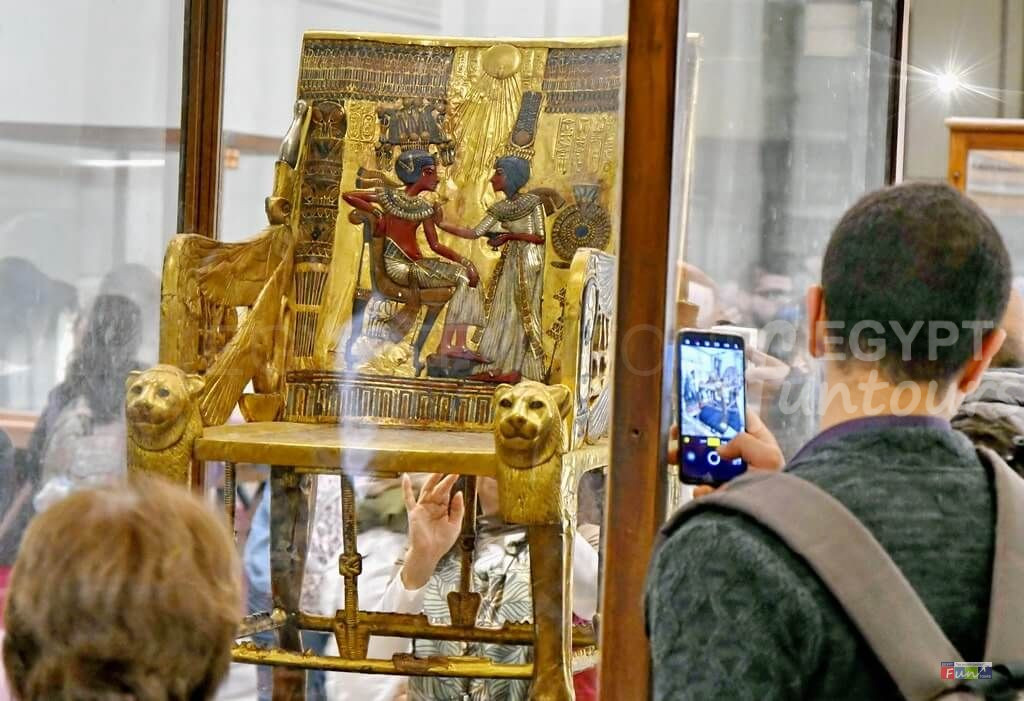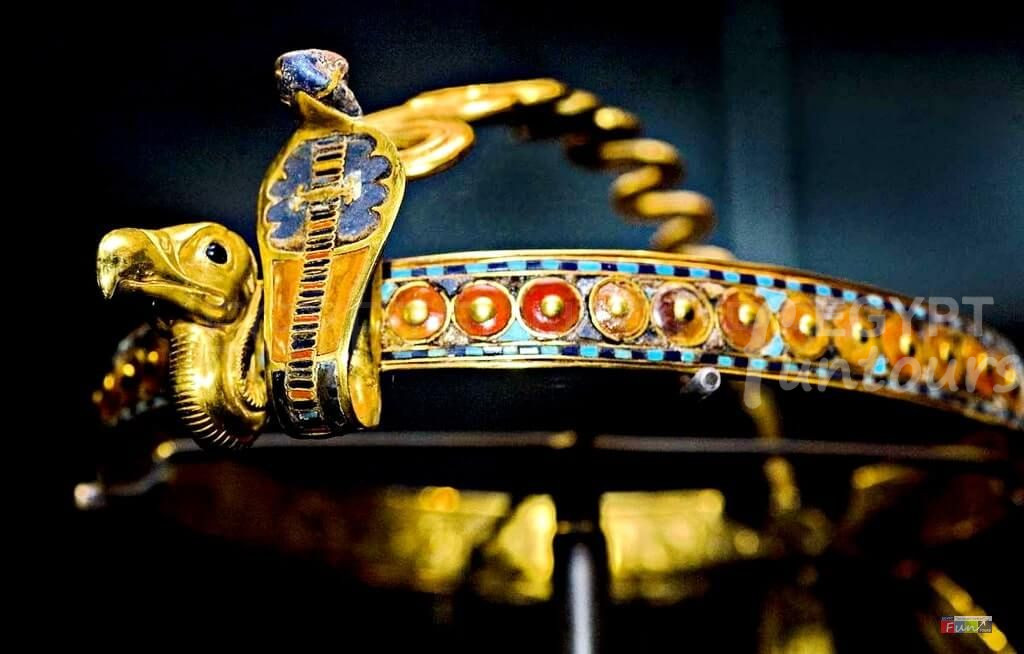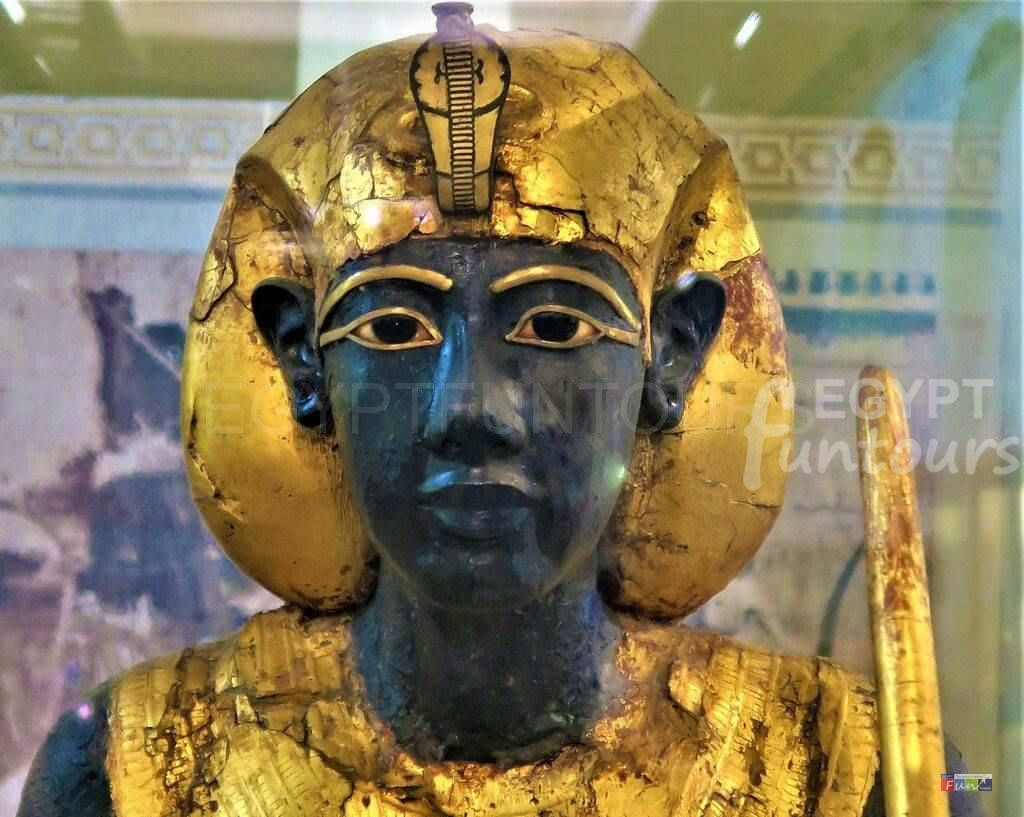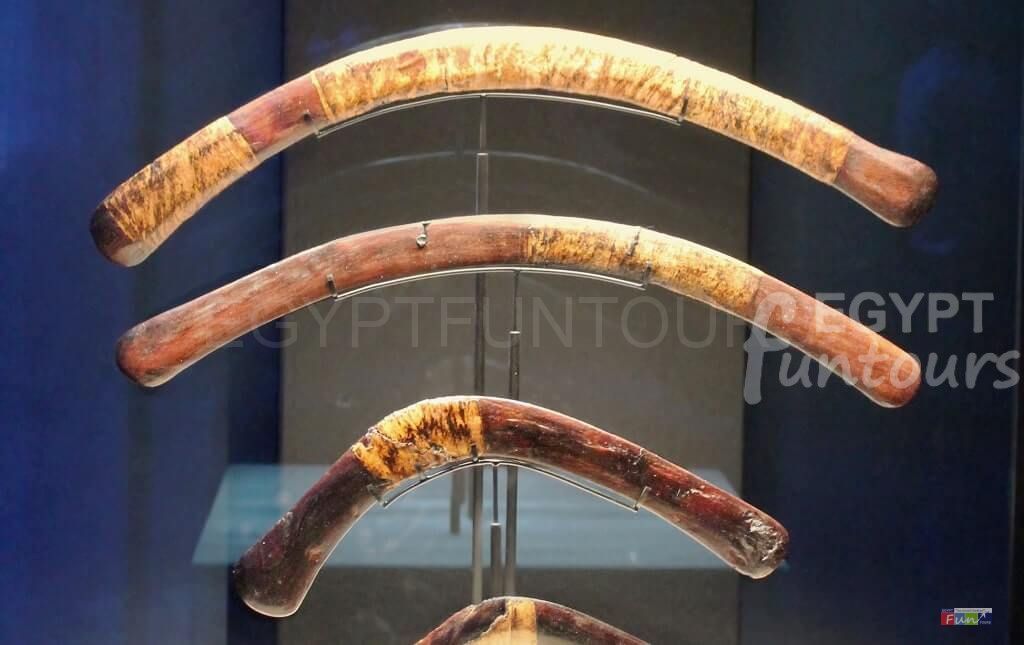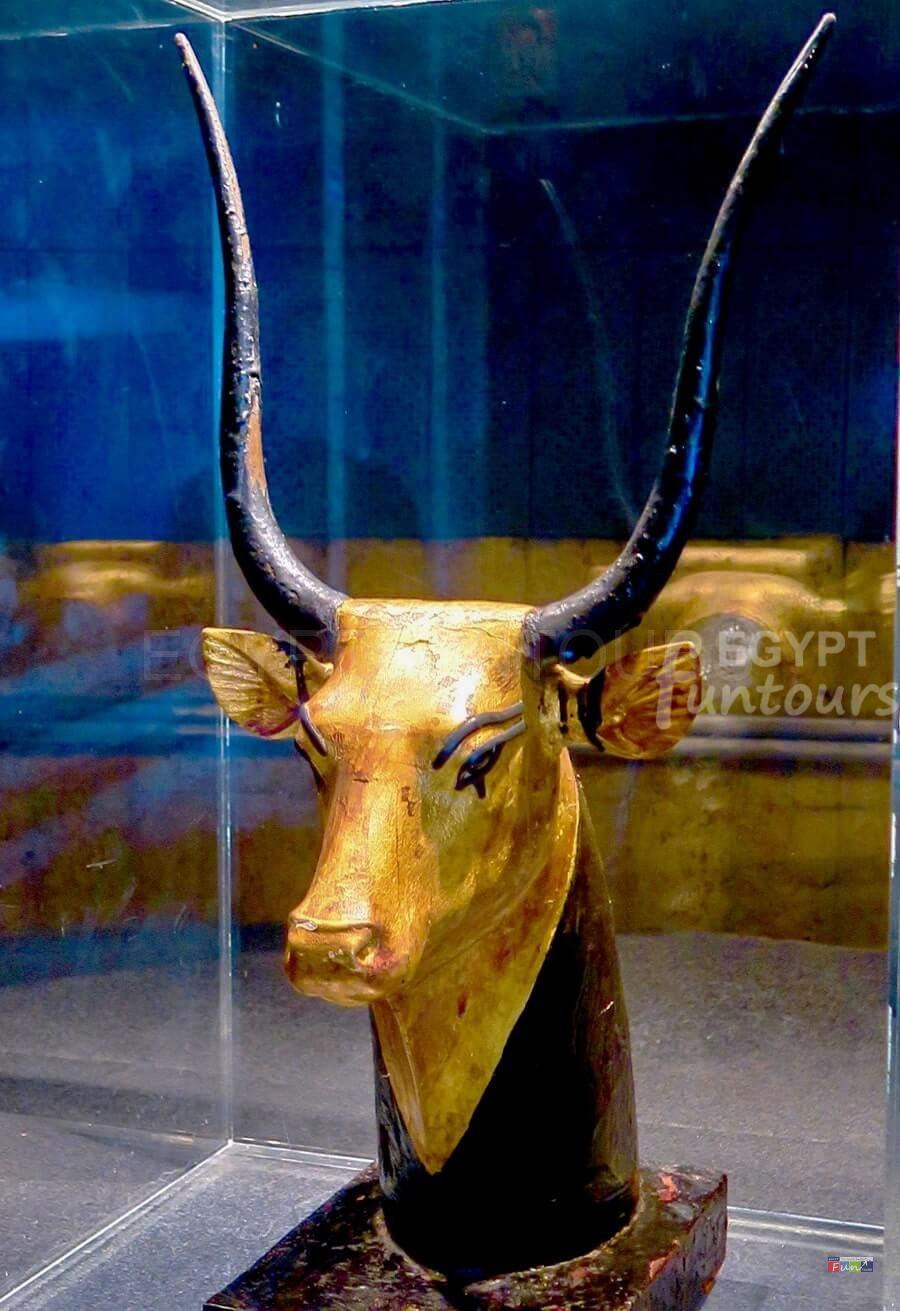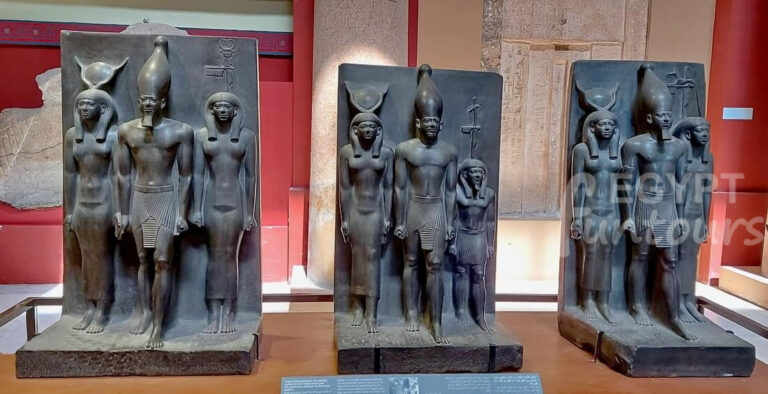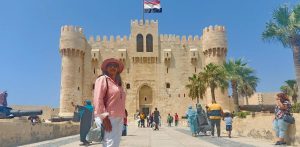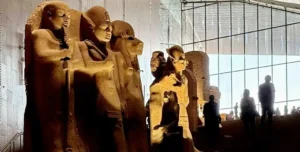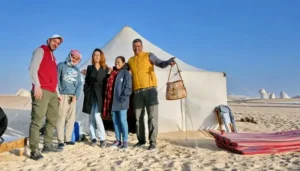Artifacts from Tutankhamun’s Tomb
Today, you can mainly see artifacts from Tutankhamun’s Tomb at the Grand Egyptian Museum in Cairo. Tomb No. 62 is in the Valley of the Kings, on the Nile’s western bank in Luxor. The tomb gained immense global recognition for its wealth and valuables because archeologists believe it is the only tomb of an ancient Egyptian ruler that we have discovered with all its contents intact.
Howard Carter discovered the tomb in 1922. He found it under the ruins of workers’ cottages from the Ramesside period. An English nobleman named Carnarvon supported Carter’s expedition. The discovery of Tutankhamen’s cartouche near the site confirmed the tomb belonged to King Tutankhamun.
Archaeologists consider the King Tutankhamun collection significant because it is the first royal treasure they have ever discovered in its entirety. It includes 5,000 items, such as the famous golden mask and three human-shaped coffins. The tomb held all of King Tutankhamun’s belongings. These included his clothing, gold jewelry, textiles, numerous scarabs, sculptures, incense, furniture, seats, oil lamps, toys, and war chariots.

